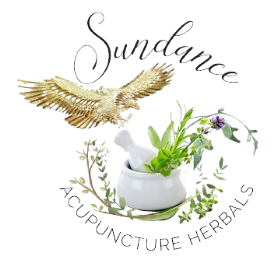Please click the following link if you prefer to read (and print) this article in PDF format.
Prevention & Treatment of SARS-CoV-2 with Chinese Medicine
Master Jeffrey C. Yuen
Over the past 3000 years, China has succumbed and endured over 500 epidemics with many notable traditions of Chinese medicine emerging to address such sufferings and concerns, such as the Shang Han Lun tradition of the Han Dynasty and the Wen Bing school of the Ming-Qing Dynasties. While it is common today to combine the best resources from both Chinese medicine and Western medicine, Chinese medical history is not short on remedies used for the prevention, treatment, and recovery of such pestilences.
Given the current public health threat posed by SARS-CoV-2 and the concerns regarding the safety of vaccines, some of the possible traditional formulas that may be useful in the prevention and treatment of Covid include the use of:
Yu Ping Feng San/Jade Windscreen Formula (玉屏風散) developed by Zhu Dan-Xi in the 13th century), which may be combined with Bai He Zhi Mu Tang/Lily Bulb & Anemarrhena Decoction (found in Zhang Zhong-Jing’s Jin Gui Yao Lue – Essential Prescriptions from the Golden Cabinet) for those who have deficiency of lung qi and fluids due to years of smoking, age, and pre-existing conditions for the prevention of Covid.
Regular pole moxa of Zusanli (St-36), Taiyuan (LU-9), and Hegu (LI-4) would be useful as a preventative measure. The smoke from the mugwort also wards off pestilence and is burned in a number of herb shops and hospitals during this crisis.
Though the pathogen is considered to be “wind-dampness toxins” that can accompany cold or heat depending on seasonal afflictions and the individual’s temperament, it generally results in heat presentation (e.g., cytokine storm) and as such, warrant formulas that utilises the Chinese medical principles of Clear Heat, Effuse Lung Qi, and Detoxify Toxins.
Two notable Chinese herbal patent formulas are Huang Lian Shang Qing Pian/Coptis to Clear the Upper Tablets (黃蓮上清片) and Qing Fei Bai Du Pian/Clear Lungs to Detoxify Toxins Tablets (清肺敗毒片) — both formulas based on the synthesis of the teachings from the Wen Bing/Warmth-Febrile Diseases school.
Common acupuncture points used can include reducing Shao Shang (LI-11), tonifying Shou Sanli (LI-10) and Xia Wan (Ren 12), and even technique on Zusanli (St-36).
During the recovery process, the suggested formulas would be Li Dong-Yuan’s Bu Zhong Yi Qi Wan/Central Qi Tonic (補中益氣丸) to bolster immunity (post-natal qi) and to resolve any residual factors that may be lingering and possibly the 17th century formula Bai He Gu Jin Wan/Lily Bulb to Consolidate Metal (Lungs) Teapills (百合固金丸) for those who have become dehydrated (yin deficient) during the process.
Acupuncture with tonification on Yin Jiao (Ren 7), Yang Jiao (GB-35), Guan Tuan ( Ren 4), dispersal of Feng Shi (GB-31), and even technique on Hou Xi (SI-3).
As these formulas are time-tested within the field of Chinese medicine, they can be a source of therapeutics as the world continues to struggle with Covid and overcome its ramifications in our everyday lives and activities.
Ingredients in Above Herbal Formula
Yu Ping Feng San
- Huang qi (Astragalus membranaceus)
- Bai Zhu (Atractylodes macrocephelae)
- Fang feng (Ledebouriella)
Bai He Zhi Mu Tang
- Bai He (Lilii Bulbus)
- Zhi Mu (Anemarrhenae Rhizoma)
Huang Lian Shang Qing Pian
- Chuan Xiong (Rhizoma Chuanxiong)
- Man Jin Zi (Fructus Viticis)
- Qiang Huo (Rhizoma Et Radix Notopterygii)
- Gao Ben (Rhizoma Ligustici)
- Jie Gen (Radix Platycodi)
- Fang Feng (Radix Saposhnikoviae)
- Gan Cao Radix Glycyrrhizae)
- Bai Zhi (Radix Angelicae Dahuricae)
- Ju Hua (Flos Chrysanthemi)
- Huang Lian (Rhizoma Coptidis)
- Da Huang (Radix Et Rhizoma Rhei)
- Huang Qin (Radix Scutellariae)
- Xuan Shen (Radix Scrophulariae)
- Jing Jie (Herba Schizonepetae)
- Bo He (Herba Menthae)
- Zhi Zi (Fructus Gardeniae)
- Lian Qiao (Fructus Forsythiae)
Qing Fei Bai Du Pian
- Ma Huang (Esphedra Herb)
- Gan Cao (Zhi) (Licorice RootHoney-Coated
- Xing Ren (Ku) (Bitter Apricot Kernel)
- Shi Gao (Gypsum)
- Gui Zhi (Cinnamon Twig)
- Ze Xie (Alisma / Water Plantain Rhizome)
- Zhu Ling (Polyporus Sclerotium)
- Bai Zhu (Chao) (White Atractylodes Rhizome – Prepared)
- Fu Ling (Poria / Hoelen Sclerotium)
- Chai Hu (Bupleurum Root)
- Huang Qin (Scutellaria / Skullcap Root)
- Ban Xia (Jiang) (Pinellia Rhizome – Gingered) 9
- Zi Wan (Aster Root)
- Kuan Dong Hua (Coltsfoot Flower)
- She Gan (Belamcanda / Blackberry Rhizome)
- Shan Yao (Discorea / Chinese Yam Root)
- Zhi Shi (Bitter Orange Fruit)
- Chen Pi (Tangerine Peel)
- Guang Huo Xiang (Agastache / Patchouli / Pogostemon Herb)
- Sheng Jiang (Fresh Ginger)
Bu Zhong Yi Qi
- Huang qi (Astragalus membranaceus)
- Renshen (Ginseng Root)
- Dang Gui (Rx Angelicae Sinensis)
- Bai Zhu (White Atractylodes Rhizome)
- Zhi Gan Cao (Honey Fried Licorice Root)
- Dang Gui (Chinese Angelica Root)
- Chen Pi (Orange citrus peel)
- Sheng Ma (Black Cohosh Rhizome)
- Chai Hu (Bupleurum)
Bai He Gu Jin Wan
- Bai He (Lilii Bulbus)
- Sheng Di Huang (Radix Rehmanniae)
- Shu Di Huang (Radix Rehmanniae Preparata)
- Mai Men Dong (Radix Ophiopogonis)
- Xuan Shen (Radix Scrophulariae)
- Chuan Bei Mu (Bul. Fritillariae Cirrhosae)
- Jie Geng (Rx. Platycodi)
- Dang Gui (Rx. Angelicae Sinensis)
- Bai Shao (Rx.Paeoniae Alba)
- Gan Cao (Rx. Glycyrrhizae)
